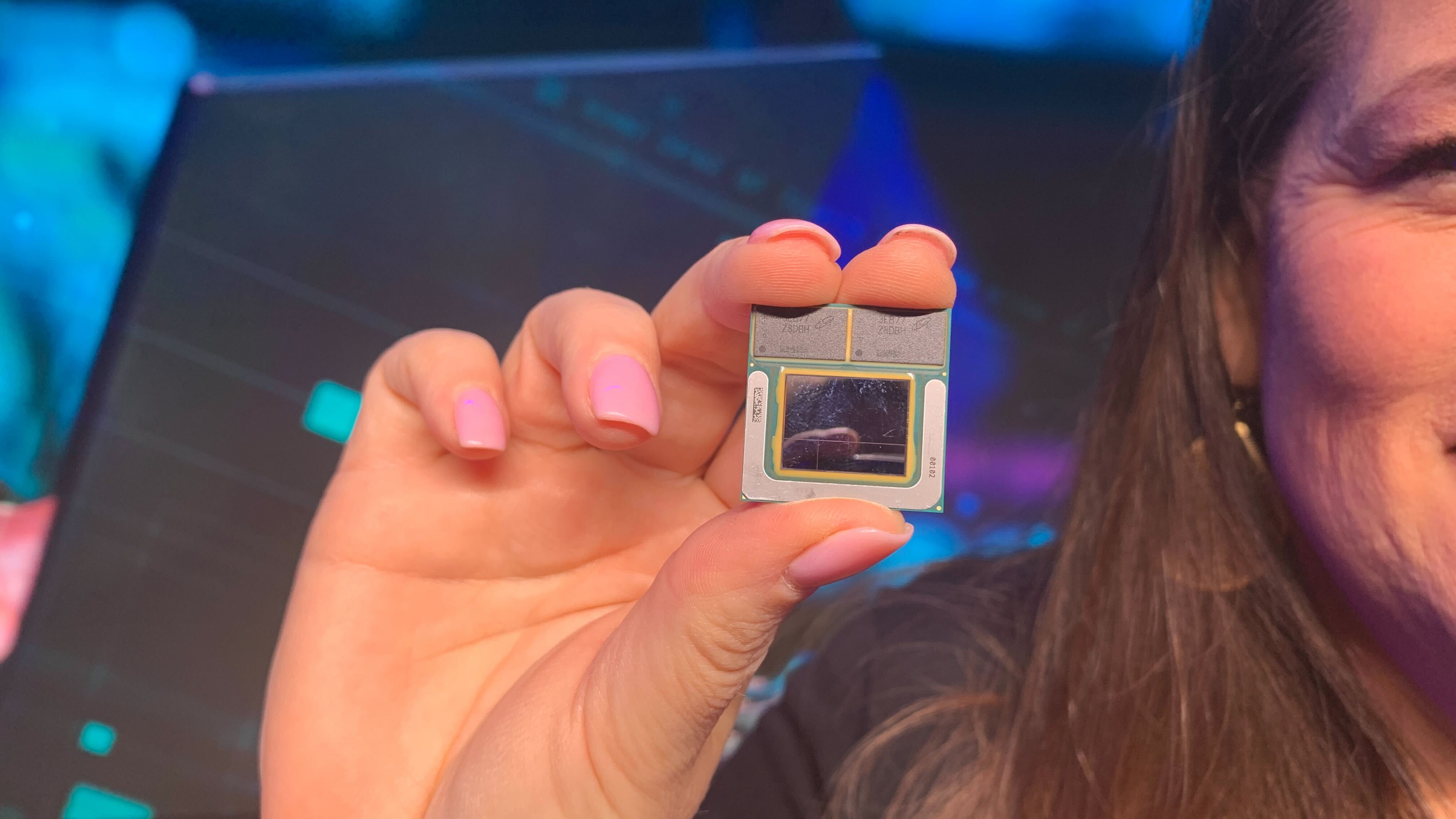
Intel fired yet another salvo in the AI PC war today with claims that its Lunar Lake chips, which are on track for launch in Q3 2024, deliver 1.4x more AI performance than the Qualcomm Snapdragon X Elite chips that Microsoft showed off today. Intel also claims incredible gains in battery life and power efficiency, saying Lunar Lake delivers the lowest power consumption it has ever seen from an x86 processor, equating to 20% lower power than Qualcomm’s chips and 30% less than AMD’s Ryzen 7 7840U. Intel also has its next-gen Arrow Lake processors for AI-infused desktop PCs on the roadmap for the fourth quarter of 2024, with updates on those chips to come next week during an Intel Tech Tour event for the press shortly before Computex 2024.
Intel has updated all of Lunar Lake’s compute elements, including faster CPU and neural processing unit (NPU) cores, a revamped low power island (LPI), and a new integrated GPU with the new Xe2 architecture. Despite all the AI-specific razzle-dazzle, Intel hasn’t forgotten gamers: The Xe2 iGPU design debuts with Lunar Lake and delivers 1.5x more performance than the current-gen Meteor Lake chips by leveraging the same architecture and feature set that will be used in the upcoming Battlemage discrete gaming GPUs. Intel also shared benchmarks and other details that we’ll cover below.
Intel’s announcement aims to steal the thunder from Microsoft’s Surface AI event today, where Microsoft whipped the covers off its new Surface Pro powered by the Arm-based Qualcomm X Elite processors. A slew of other Qualcomm X-series laptops from Dell, Lenovo, HP, and Asus also debut today as Arm chips begin their biggest assault on the PC market yet.
Qualcomm’s new Arm-powered X-series processors are said to be tightly integrated with new Windows AI features that leverage its best-in-class NPU for AI workloads. Qualcomm says its chips are faster than Intel, AMD, and Apple chips, all while delivering incredible battery life and power efficiency. That sets the stage for Windows on Arm PCs to finally rival Apple’s seemingly unbeatable M3 systems, a feat that Intel and AMD have yet to accomplish. Naturally, Intel aims to do the same with Lunar Lake, and AMD has its Zen 5 processors lined up for later this year, too.
If the X-series chips live up to their billing, Qualcomm’s processors will pose far more of a threat to the x86 hegemony than Apple simply by virtue of their support for Windows. Apple’s walled garden has restricted its ability to chew away a significant amount of market share from the x86 incumbents. Let’s dive into the details.
Intel Lunar Lake Processors Specifications
Arrow Lake will likely leverage the same CPU architectures as Lunar Lake, with the company describing the series as an extension of its Core Ultra family. It should include more cores and higher power limits, thus providing significantly higher performance for desktops. Intel will also have higher-power mobile variants of Arrow Lake for higher-performance laptops and notebooks. Arrow Lake will be Intel's lead vehicle for its new Intel 20A process node, while Panther Lake will follow with the Intel 18A process when it comes to market in 2025.
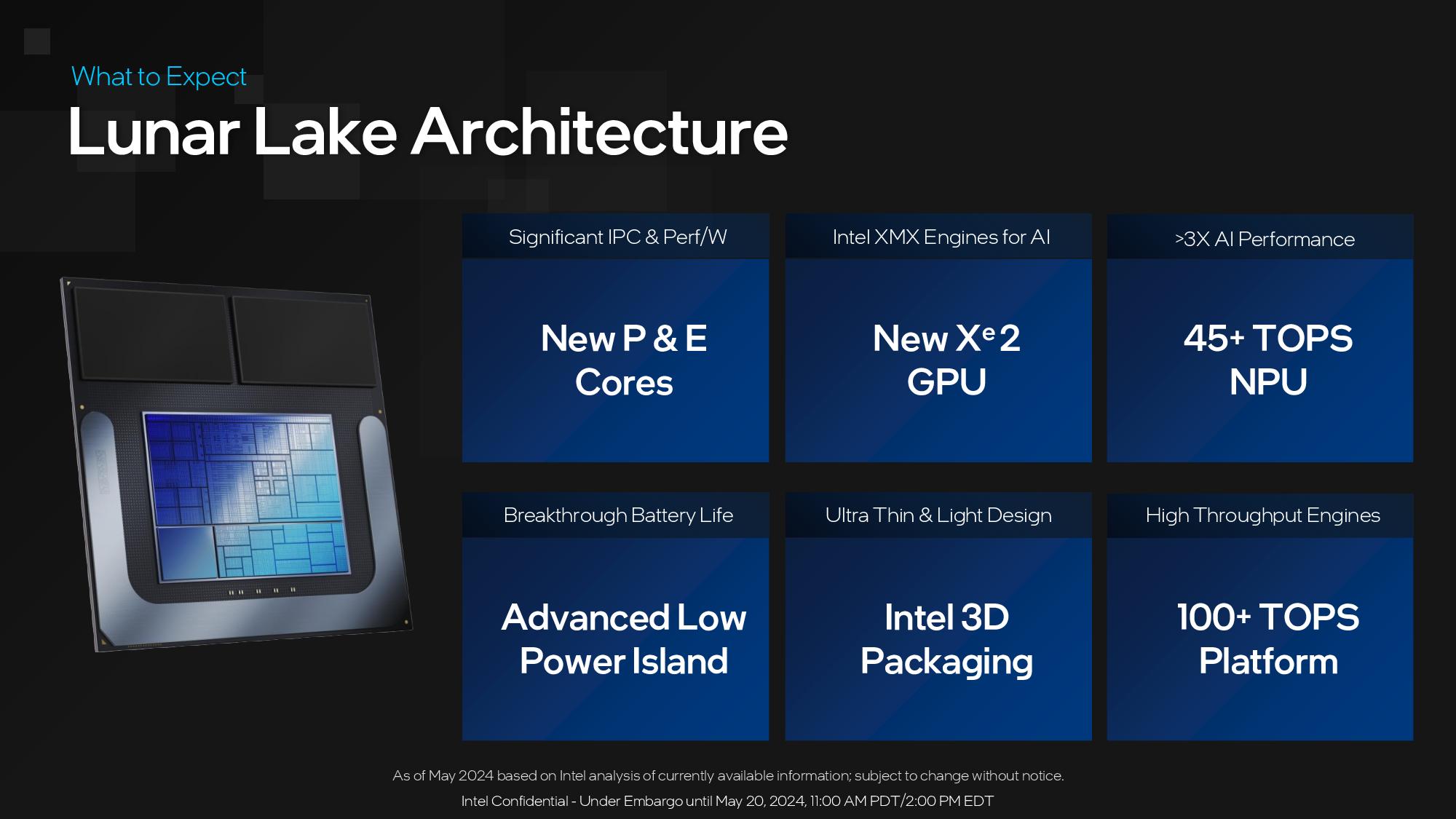
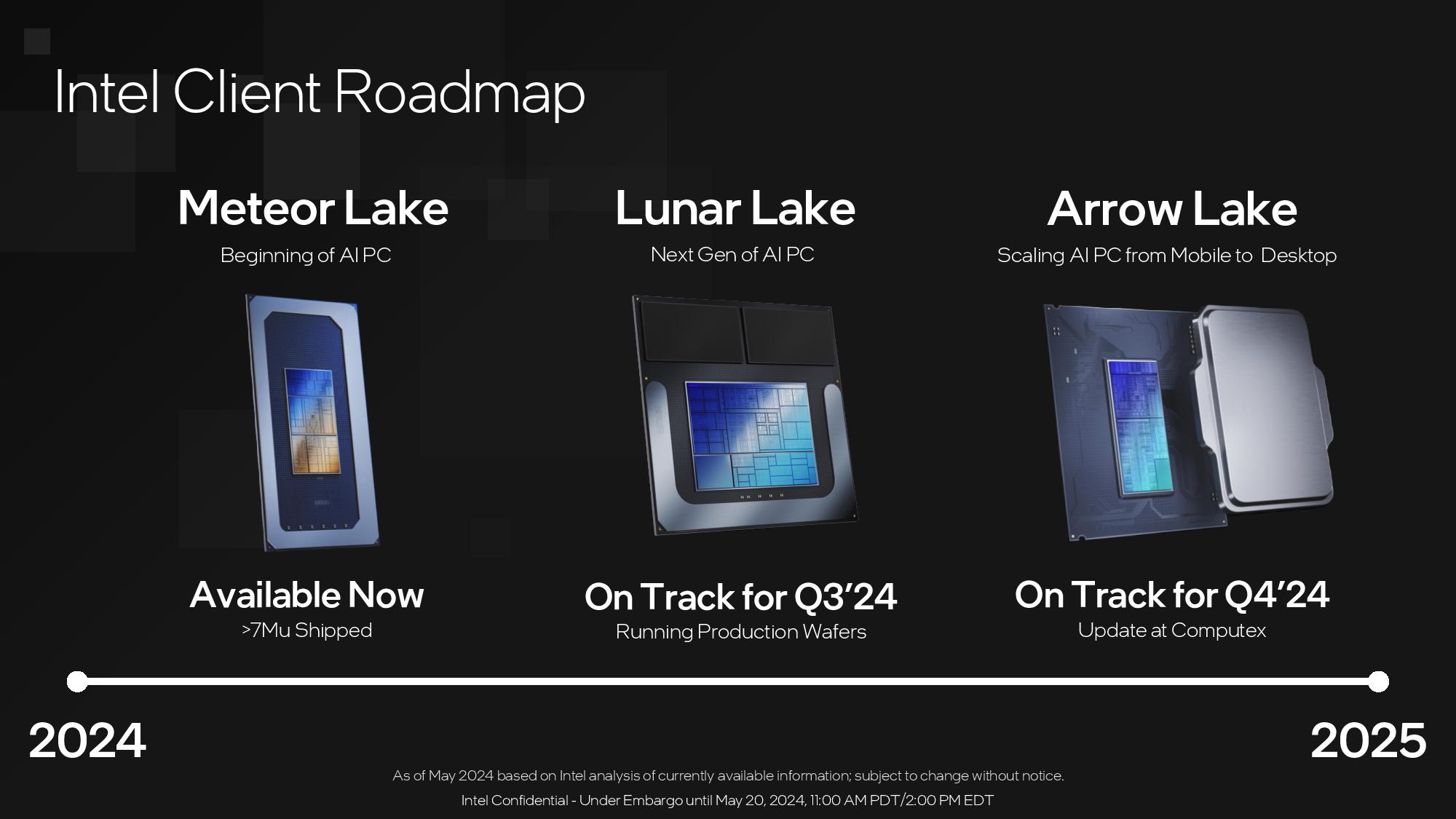
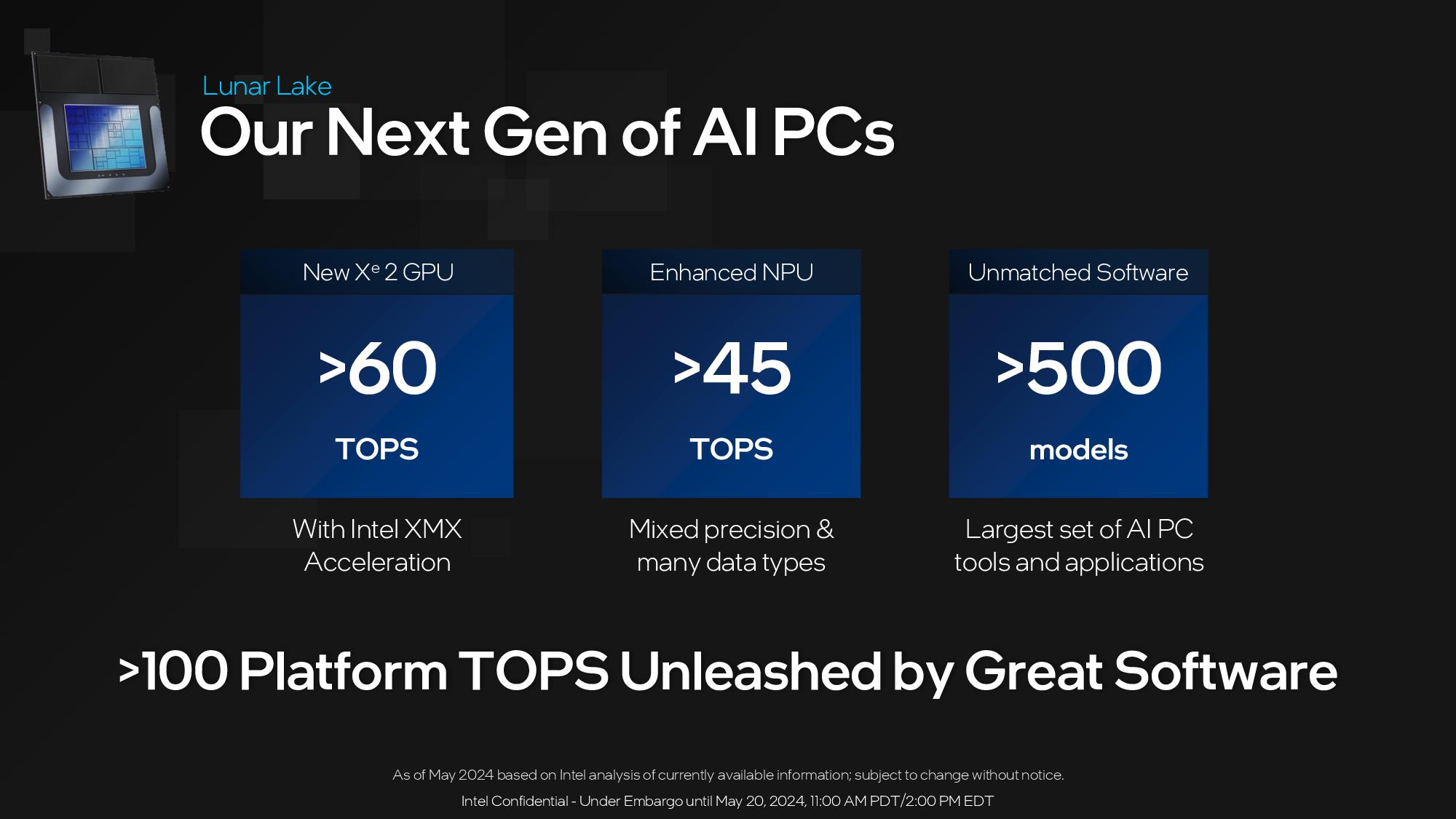
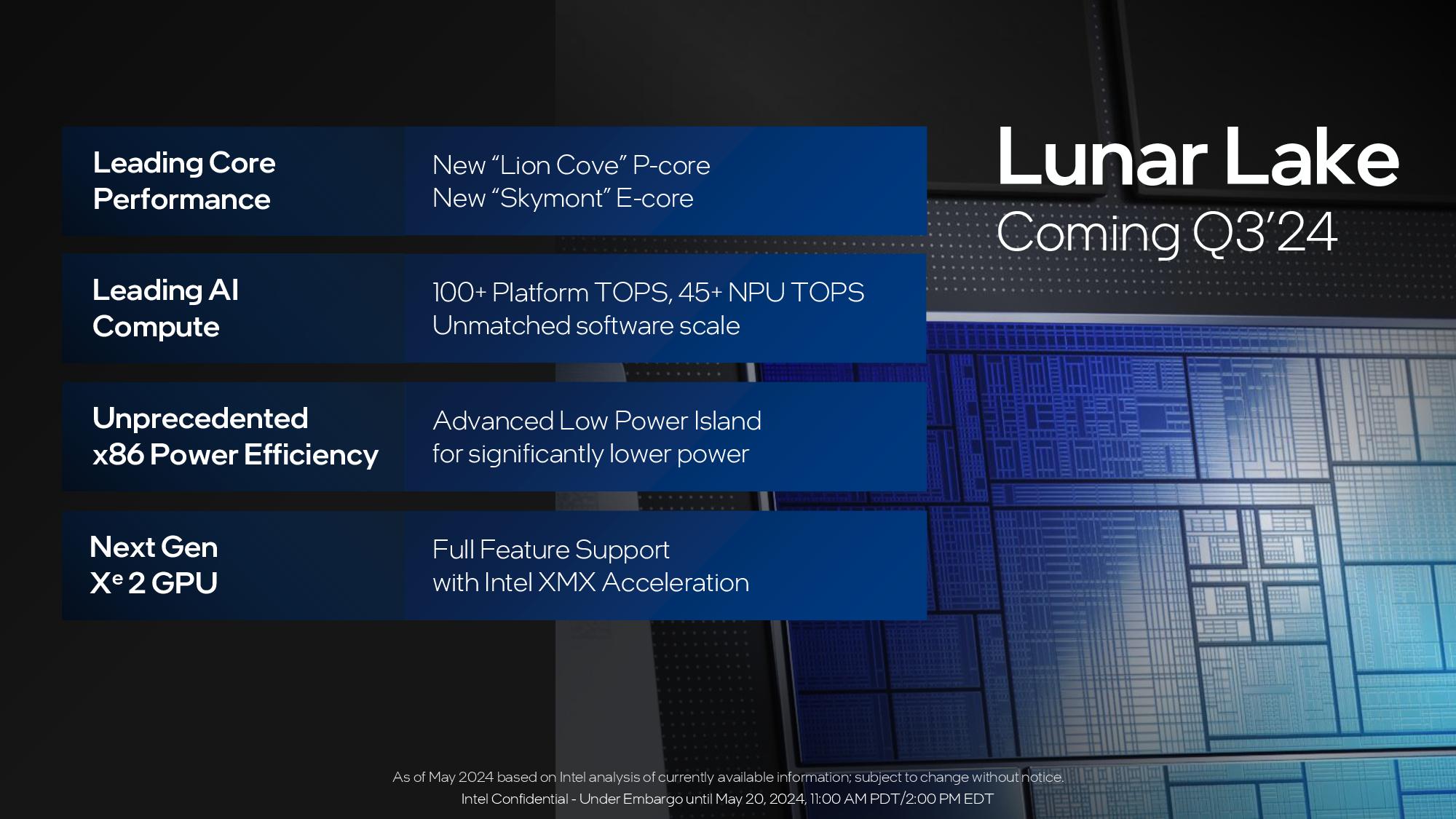
Lunar Lake production wafers are already running through its fabs as the company races toward a Q3 launch to OEMs so they can have laptops ready for the holiday retail season. Intel’s Lunar Lake CPUs for laptops build on the lessons the company learned with its Meteor Lake chip, the first to use a tiled/chiplet architecture and the first to include an integrated NPU to accelerate AI workloads.
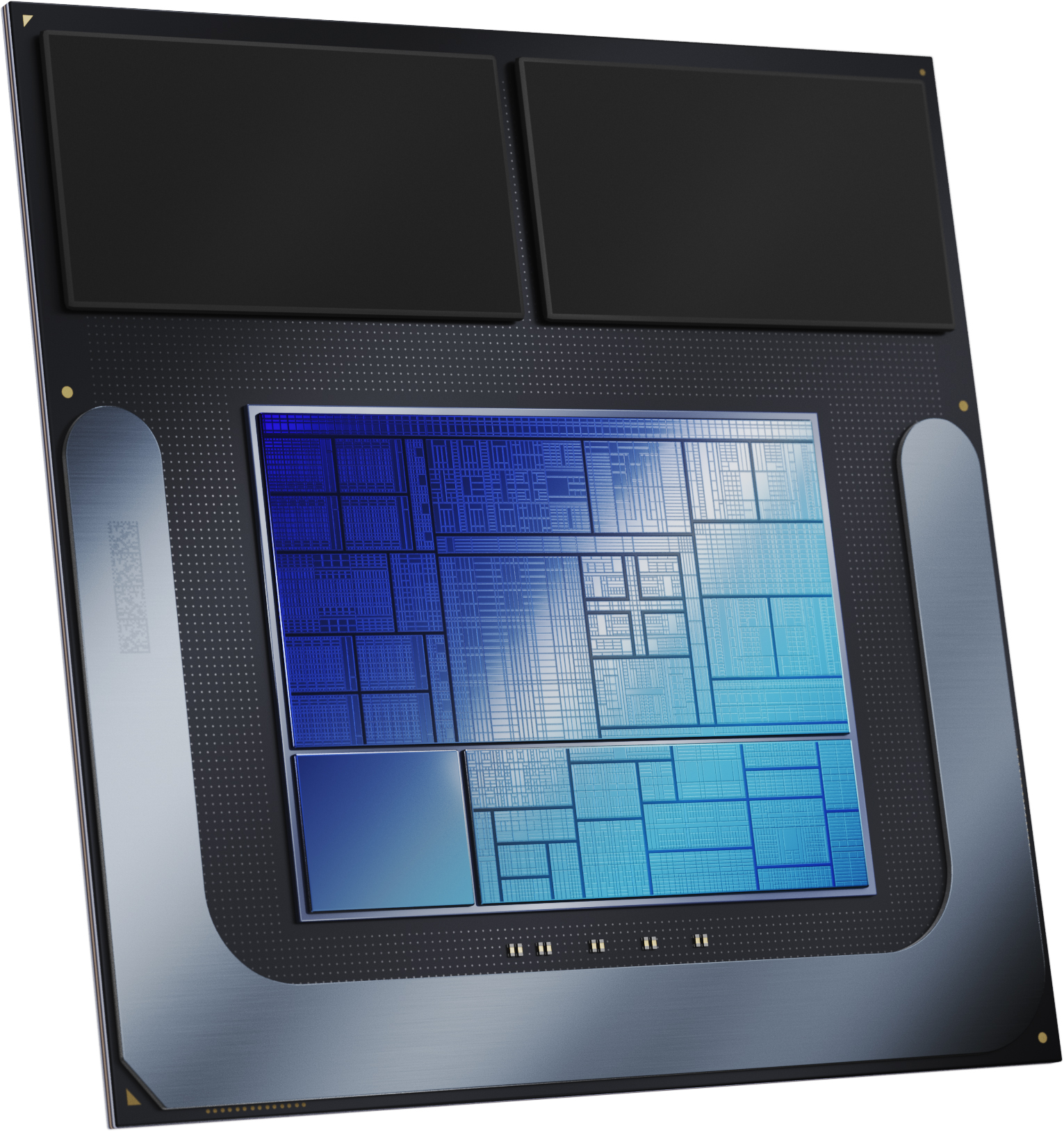
Lunar Lake is comprised of three tiles/chiplets, which is one less than the four-tile Meteor Lake, suggesting that Intel has merged the SoC and GPU tile. Lunar Lake comes with performance cores (P-cores) that wield the new Lion Cove microarchitecture and efficiency cores (E-cores) with the Skymont microarchitecture, thus delivering two new CPU architectures with this launch. Intel hasn’t shared detailed specifications for Lunar yet, but we do know from the test notes Intel shared that one configuration, ostensibly the flagship SKU, is a Lunar Lake MX model with four P-cores and four E-Cores (4+4). Intel hasn't divulged which process node it uses to fab the CPU tile, but rumors point to TSMC's N3B node.
These cores should deliver much higher instruction per cycle (IPC) throughput than the current-gen Meteor Lake. The P-cores purportedly lack hyperthreading, so the chip only has eight threads at its disposal from the primary CPU cores. These core and thread counts can be deceiving, though — Intel compares its 4+4 chip to eight-core/16-thread models from AMD, implying that Lunar has a tremendous amount of compute power packed into each core. The highlighted MX model was tested in both 17W and 30W TDP configurations (those are PL1 power ratings — Intel hasn’t shared PL2) and supports LPDDR5-8533 memory.
Intel’s current-gen Meteor Lake was its first to use a Low Power Island (LPI), which is a second tier of two lower-power E-cores that reside on a separate die (SoC tile). The LPI kicks in during periods of idle time or when the system is running a single task, thus allowing Intel to put the primary E-cores and P-cores to sleep to save power. Intel has now expanded on this concept with Lunar, delivering twice the LPI compute power of Meteor Lake. This enables the LPI to handle even more strenuous ‘busy idle’ scenarios (multiple apps running simultaneously).
Intel hasn’t clarified if it doubled the LPI core count to four, or if the performance increase merely comes from a newer architecture and higher clock rates for the LPI. Intel used the same architecture for both its E-Cores and LPI cores with Meteor Lake, so it’s logical to expect the new LPI cores to also leverage the new Skymont microarchitecture.
Lunar’s NPU now delivers 45+ TOPS of performance for AI workloads, quadruple that of Meteor Lake’s 11 TOPS and exceeding Microsoft’s 40 NPU TOPS requirements for next-gen AI PCs. This level of compute allows elements of Microsoft’s Copilot to run locally on the PC, but other applications will also leverage the unit for a myriad of AI-accelerated workloads (more on that below). Intel hasn’t shared details of its enhanced NPU yet, but we do know it supports mixed precision and ‘many’ data types.
The NPU is primarily for background tasks, while the GPU steps in for heavier parallelized AI workloads. Lunar’s new integrated GPU features the Xe2 architecture that will soon power the company’s next-gen Battlemage discrete gaming graphics cards. This iGPU leverages the full feature set of the new architecture, which includes support for Intel Xe Matrix eXtensions (XMX) — something Meteor Lake's iGPU lacks. The iGPU’s XMX systolic arrays provide hardware acceleration for matrix math operations, yielding big improvements in AI performance.
Intel says the new iGPU will deliver up to 60 TOPS of AI performance, a 3.15x gain over the current-gen chips. Thus, Lunar Lake will have 100+ TOPS of total AI performance.
Lunar Lake Performance Benchmarks
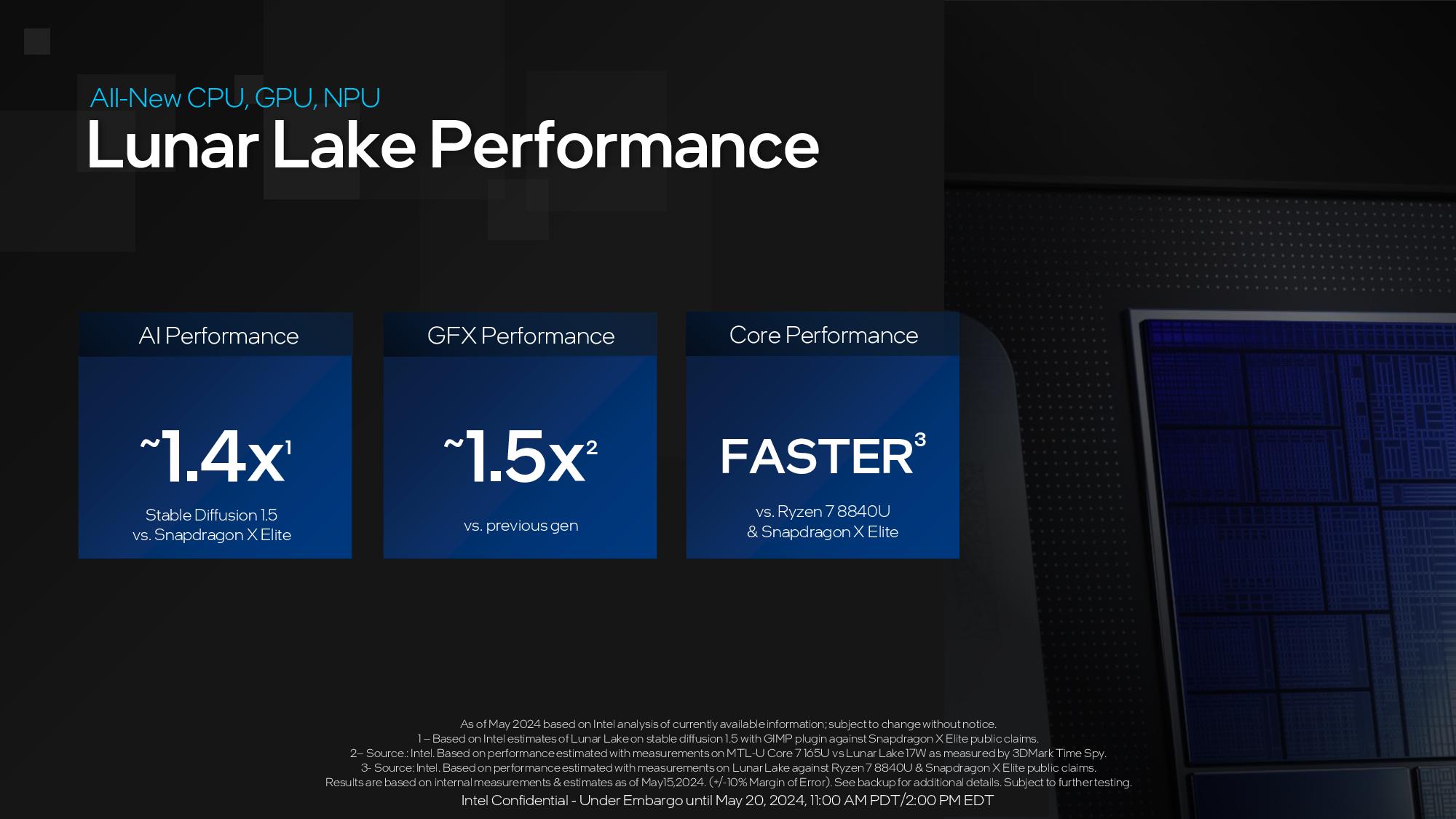
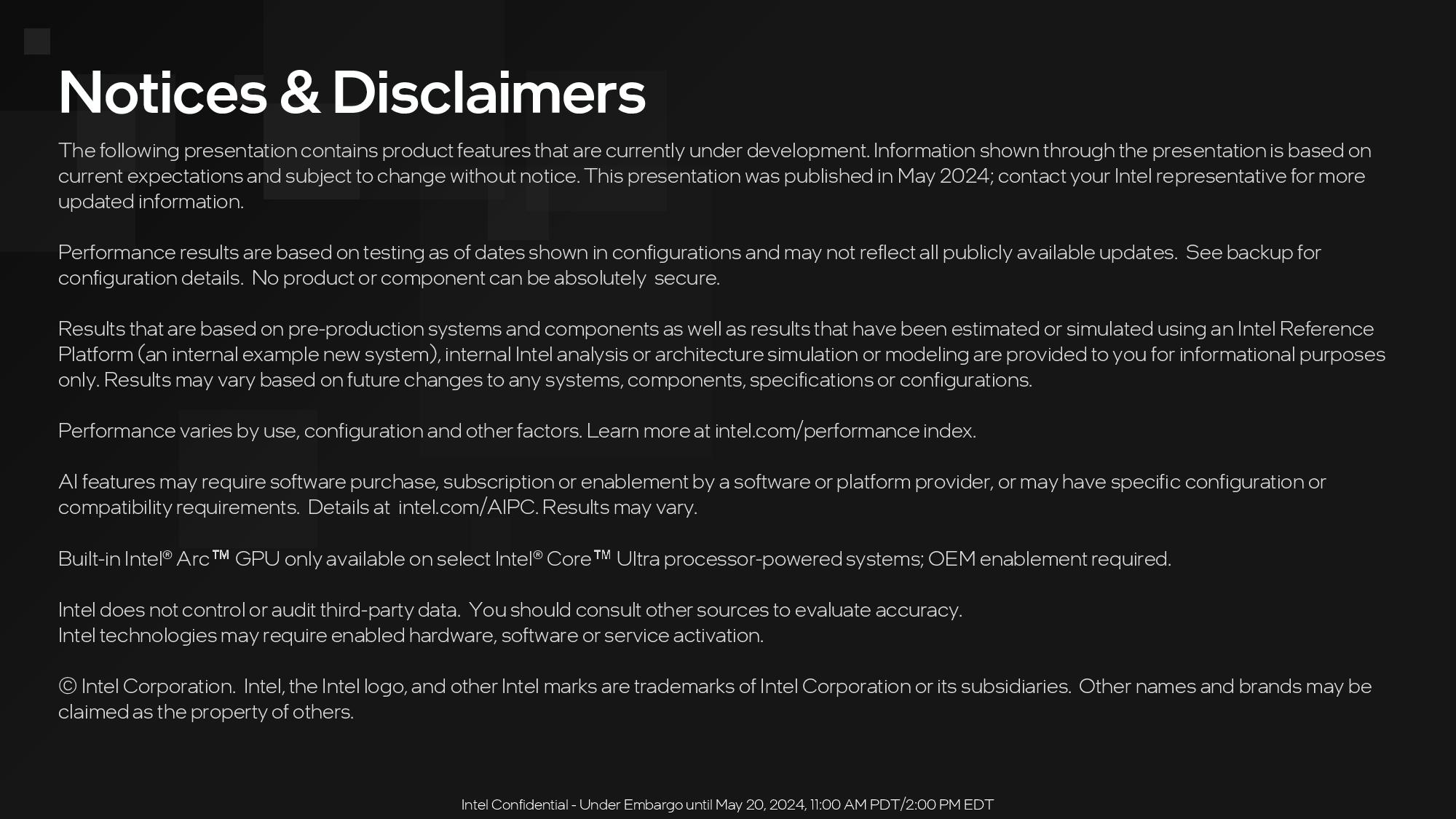
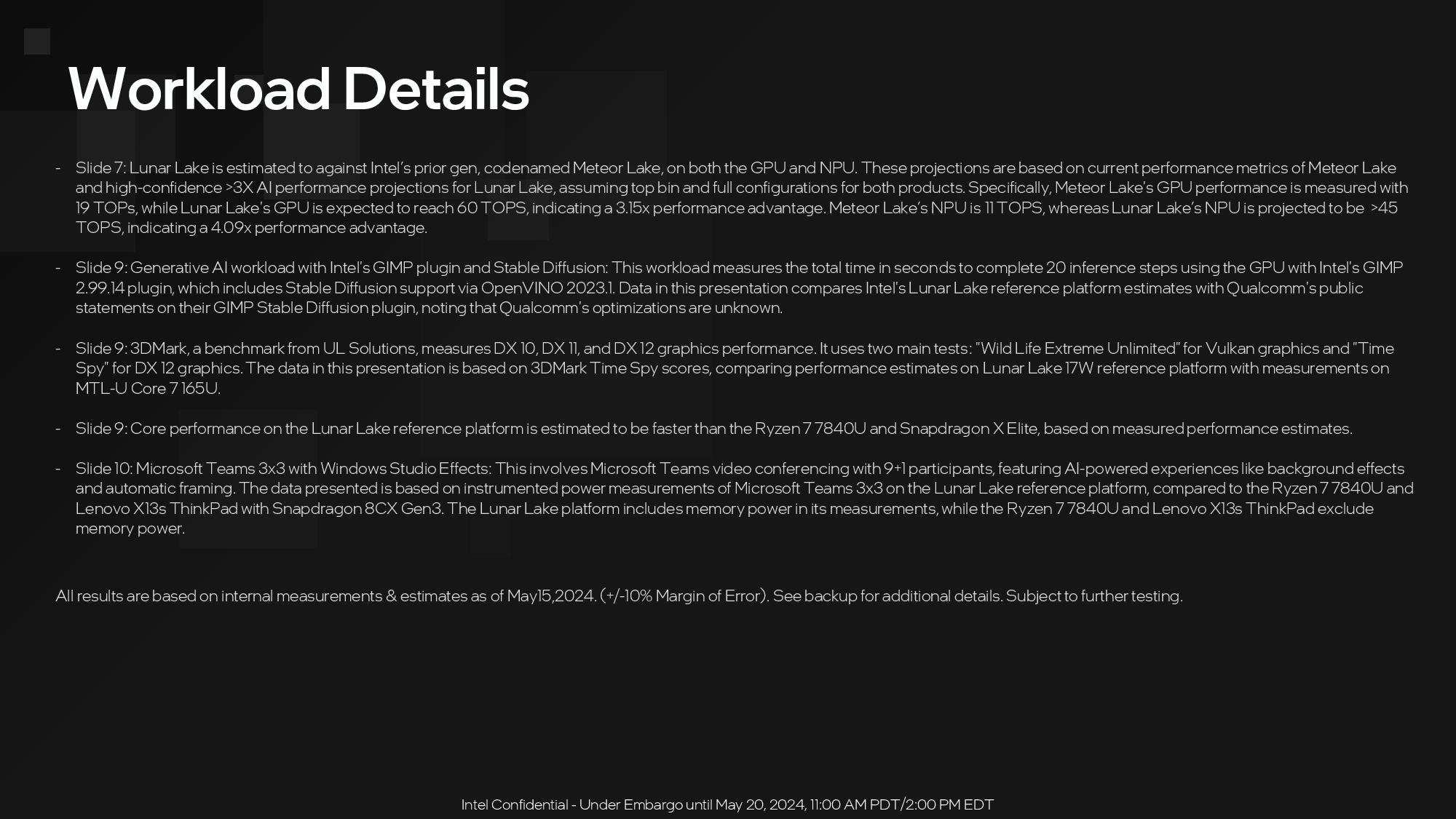
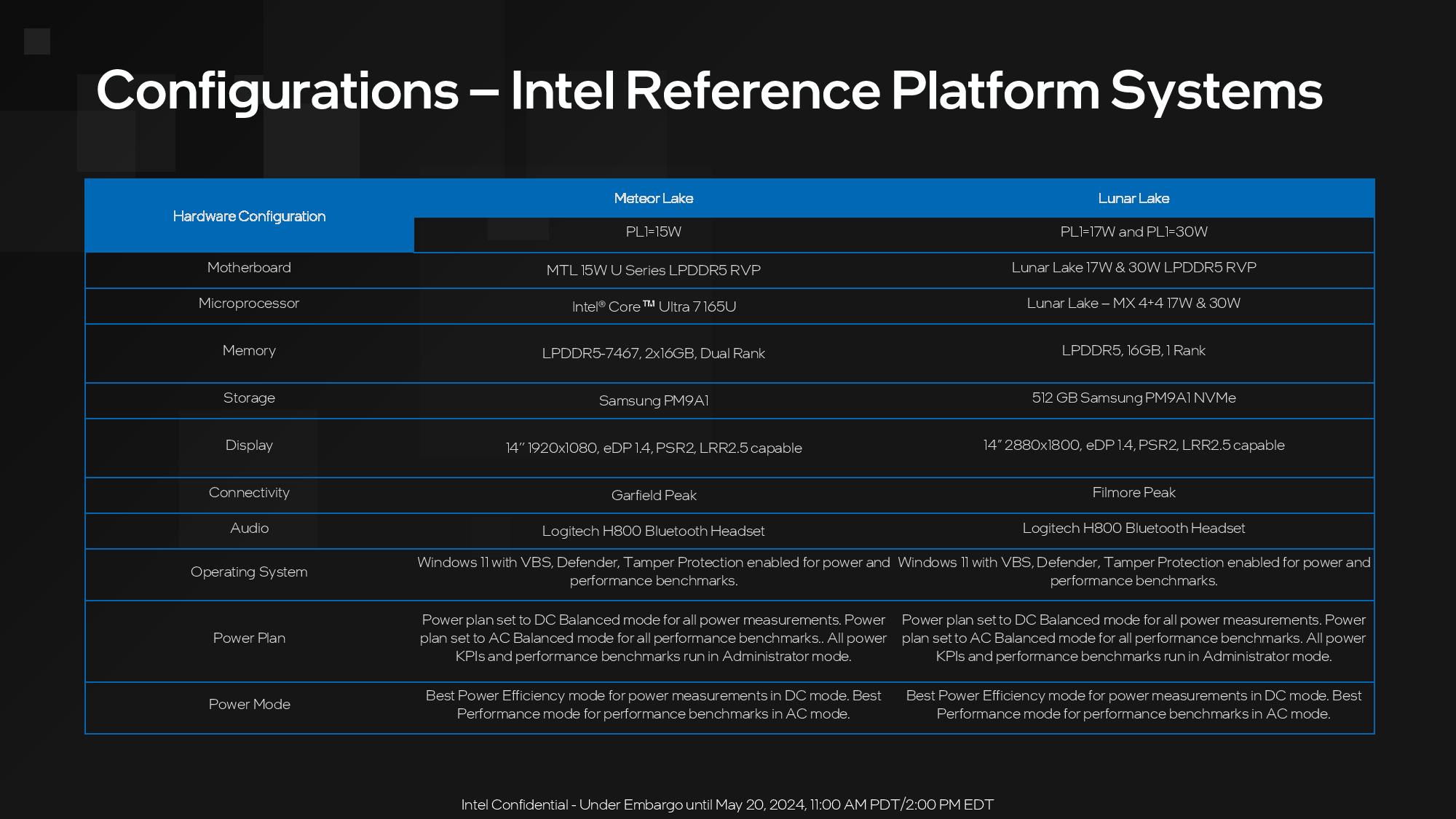
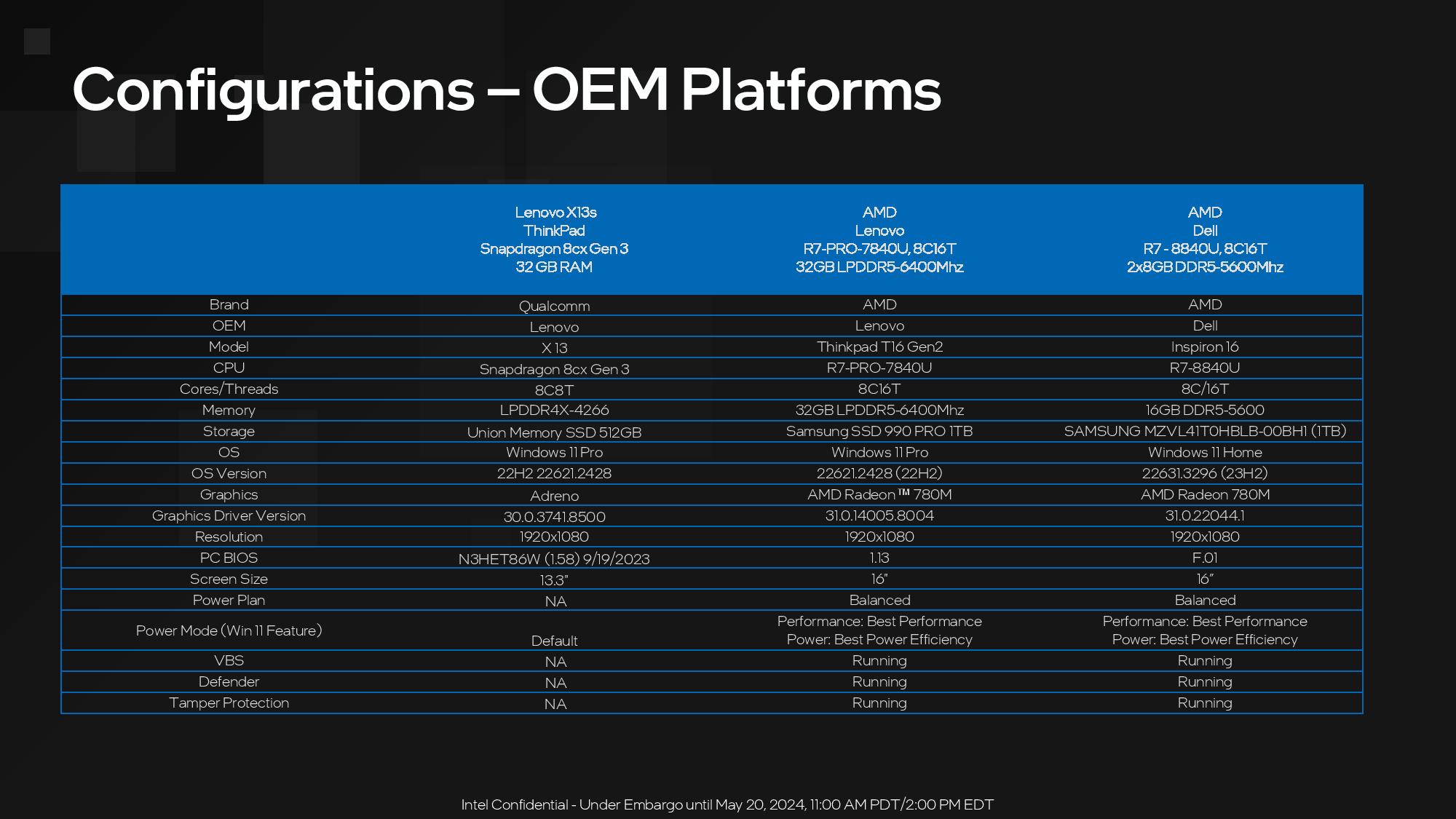
Intel provided limited performance benchmarks, but as with all vendor-provided test data, we should take them with a grain of salt. This round of benchmarks comes with plenty of caveats. Intel tested a Lunar Lake reference validation platform (RVP) that provides unlimited power delivery and has essentially unlimited cooling capacity. In contrast, retail Lunar Lake laptops will have power and thermal constraints that could reduce real-world performance.
Intel also avoided comparisons to Apple’s M3 Macs yet again, instead focusing on its Windows competitors. The company tested with an AC Balanced power profile for its performance benchmarks, meaning these tests were conducted with the laptop plugged into the wall. You should expect lower performance when the laptop is on battery power. You can see the test notes and configurations at the end of the above image album.
Intel claims that Lunar Lake delivers 1.4x more AI performance than the Snapdragon X Elite’s publicly posted GIMP benchmark results. This test was conducted with Intel’s GIMP plugin for Stable Diffusion (OpenVINO) and measures the time required to complete 20 inference steps. Naturally, this is a very narrow test scope, but we can expect more head-to-head benchmarks to emerge when the X Elite comes to market.
Intel also claims that the Xe2 GPU delivers 1.5x more gaming performance than the current-gen iGPU on the Meteor Lake Core 7 165U, but this isn’t based on real-world performance. Instead, Intel used the synthetic 3DMark Time Spy benchmark with the Lunar Lake chip running at a 17W TDP. We can expect a smaller performance delta in real world gaming, though it should be noted that real-world gaming benchmarks of Meteor Lake have been a bit hit and miss.
Intel also provided a very nebulous claim that the Lunar Lake CPU is ‘FASTER’ (yes, that’s it, ‘faster’) than the Ryzen 7 8840U and Snapdragon X Elite, but this is based entirely on Intel’s estimations — the company didn’t share any concrete benchmarks or stats to back up the claim. Intel says it doesn’t have final performance numbers for its CPU yet, an odd claim given that it says it already has production wafers running through its fabs. In either case, Intel says Lunar’s CPU performance is trending to its expectations.
Lunar Lake Battery Life and Power Efficiency
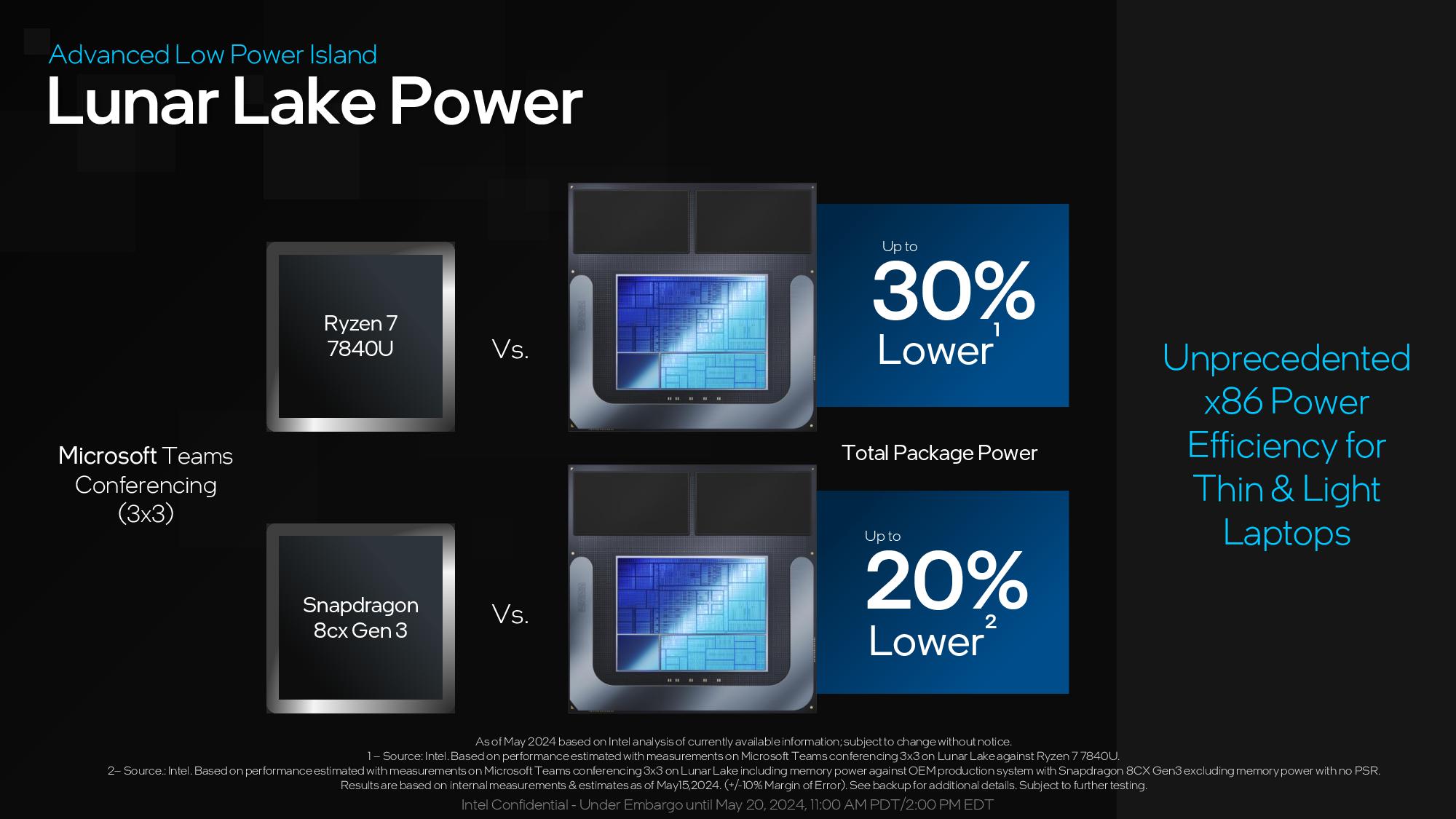
Intel tested its battery life measurements with the DC Balanced power profile (laptop unplugged) and measured with tools that intercept the power feed at the physical layer. Intel’s test, again, has a very narrow scope: Intel tested a 3x3 (9+1 participant) Microsoft Teams call with Windows Studio Effects running AI-driven background effects and automatic framing.
That means this test is constrained to power efficiency in one specific AI use-case, and it’s possible that the LPI was also in use during this workload (meaning the standard cores were in a shutdown state, so only the SoC tile was active). However, Intel says Lunar Lake’s power measurements include the power consumption from the memory (it’s built into the chip package), whereas it didn’t include memory power in the results from competing devices. Oddly, Intel says the benchmark has a +/-10% margin of error, which doesn’t seem very accurate given the deltas recorded.
Intel says Lunar Lake’s power efficiency metrics represent a radical shift for x86 CPUs, delivering up to 30% lower active power consumption than the Ryzen 7 7840U (Intel says this is the newest AMD model that it has available for testing). Intel also doesn’t have a Snapdragon X Elite to test, so instead it used the uninspiring Snapdragon 8CX Gen3 to claim a 30% advantage over Qualcomm. Naturally we can expect the X-series Qualcomm processors to be far more competitive.
Lunar Lake AI Software Ecosystem
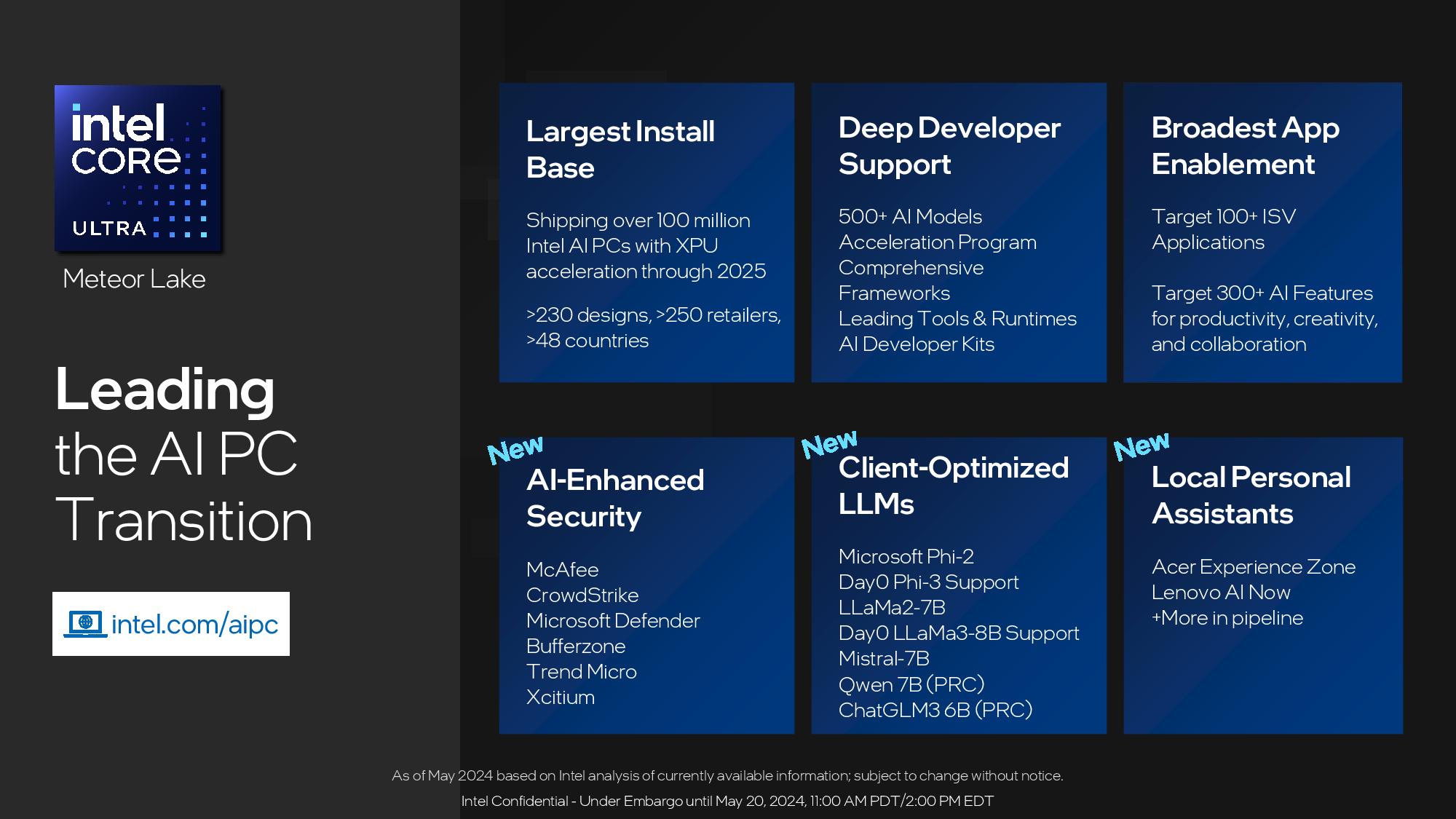
Intel says it has the largest AI PC install base already, with seven million devices shipped and 40 million in the pipeline to be sold by the end of the year. Additionally, it has set a goal of selling 100 million AI PCs by the end of 2025. However, while delivering compute horsepower is important, software and drivers are the key to extracting maximum performance. As you can read here, Intel has invested heavily in the AI software and hardware developer ecosystem and is also delivering monthly driver updates for its NPU, a must in the fast-moving AI software space.
Intel’s systems currently support 500+ AI models, with a heavy emphasis on Day 0 support for new models like Microsoft’s Phi-2 and Hugging Face's LLaMa2-7B. Intel also plans for Day 0 support for the next-gen Microsoft Phi-3, along with LLaMa3-8B and Mistral-7B.
Ingrained AI software services are also now appearing in applications. McAfee software uses the NPU to detect deepfake videos and images 3x faster than the CPU in real time. Similarly, McAfee and Dell’s CrowdStrike delivers in-memory threat detection via the NPU, thus reducing memory usage by a third and freeing up 20% of CPU usage. A number of features are also now built into the Adobe Creative Cloud suite, and other content creation applications have similar features available or in the works. Intel is targeting 100 ISV applications and 300+ AI features to be released this year.
Into the market
Intel has already sold seven million Meteor Lake processors this year and says it doesn’t have enough chip packaging capacity to fully satiate the voracious demand, though more capacity will be coming online later this year. As such, it claims that it has already sold more of these AI-enabled chips in the first quarter of the year than all its Windows competitors combined (re: AMD and Qualcomm).
Intel plans to ship 40 million AI-enabled processors by the end of the year, and Lunar Lake wafers are already in the company's fabs. Things are shaping up for a big showdown in the CPU space, with AMD Zen 5 processors also set to arrive on laptops and desktops. Qualcomm, so far, isn't talking about desktop PCs, though its chips could certainly be put into all-in-one devices if desired. We look forward to testing Lunar Lake and Arrow Lake processors, as well as competing solutions from AMD and Qualcomm, when they launch later this year.







